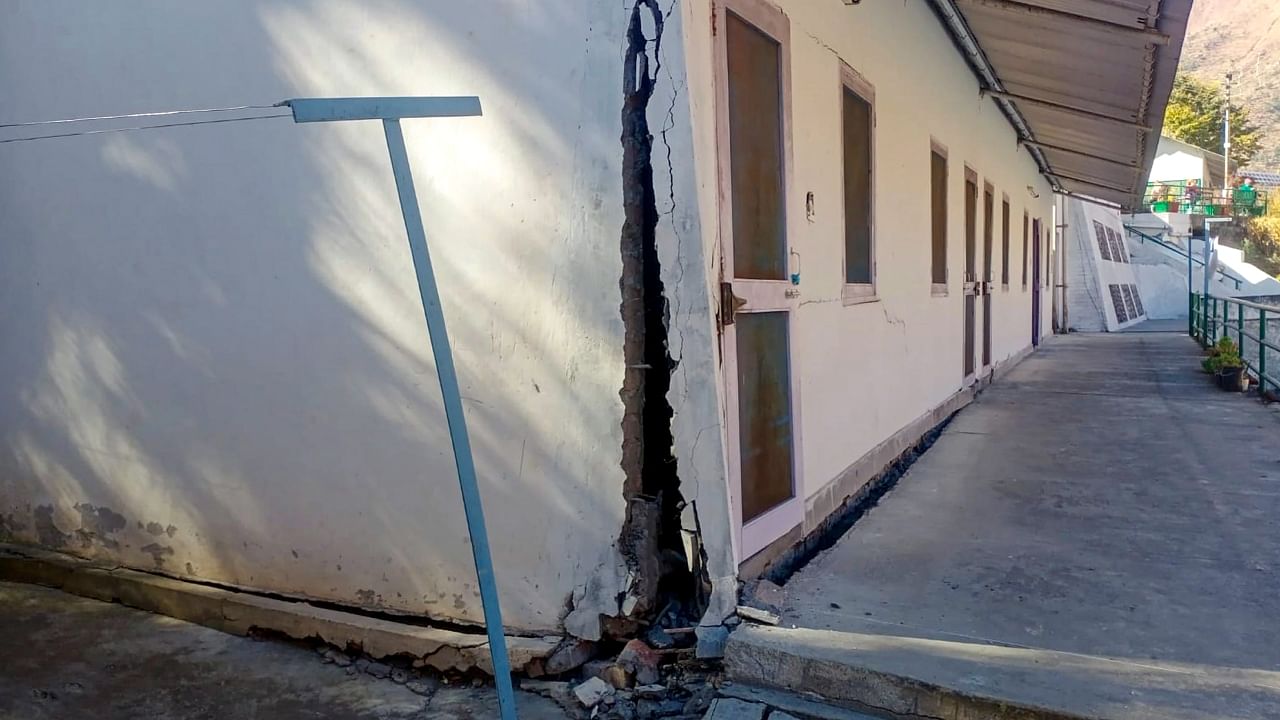
Joshimath is sinking gradually with huge cracks developing in its houses, roads and fields.
Credit: PTI Photo
The National Disaster Management Authority’s (NDMA) reports, prepared by experts from various fields, which said that Uttarakhand’s Joshimath town has long passed its carrying capacity are in line with warnings issued for many years. Land subsidence and cracks in houses and on roads had created panic in the town in December last year. It has seen signs of stress since then, too. Some parts of the town have sunk by over 3 ft and shifted by 1.4 ft. The reports, based on technical evaluations, have sought a ban on construction in spring zone areas. They have also called for setting up a disaster-resilient model town to rehabilitate the displaced families. They want public awareness to be created about geo-technical and geo-climatic conditions of the area so that the proposals can be implemented with cooperation from the people.
A Central Building Research Institute (CBRI) report has said that 20 per cent of the houses in Joshimath are unusable and 42 per cent are “under assessment”. Another report by the Geological Survey of India (GSI) has said that ground cracks are still developing, especially in areas where multi-storey buildings have been built. The town had a population of 16,709 in 2011 but it is 25,000 now. Joshimath is a sinking town, and it will need extraordinary efforts to salvage it. The reports are not just about Joshimath. All the Himalayan states are facing the same dire situation. Roads, buildings, hydro-electric projects and other constructions are still being planned and undertaken without a thought about the fragility of the terrain and its carrying capacity. Concerns over the Char Dham road project are real, but governments have a political interest in pilgrimage tourism alive and in keeping construction activities going in the name of ‘development’.
Uttarakhand has experienced over 1,100 landslides this year, compared to 354 in 2021 and 245 in 2022. The entire region is prone to earthquakes and the northern districts of Garhwal fall in the highest category of seismic activity. All the reports have called for a review of town-planning practices and building norms in the hilly region. Construction practices, patterns of habitation, and lifestyles have to change. There should be better regulatory mechanisms and more efficient use and disposal of water and waste. If the region has to survive, it has to make changes, and some of them will be painful. But the right message has not been learned even after all the disasters have happened and warnings have been sounded. The Uttarakhand government did not want the reports to be made public and the state High Court had to prod it to do so. The government’s view of the report is clear from that.